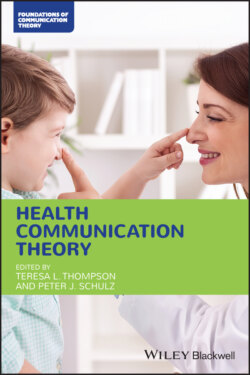Читать книгу Health Communication Theory - Группа авторов - Страница 43
Evocative Autoethnography
ОглавлениеCommunication scholars Carolyn Ellis and Art Bochner are widely recognized for conceptualizing, curating, and promoting autoethnography, in general, and evocative autoethnography, in particular. To them, autoethnographies are personal “stories with raw and naked emotion that investigate life’s messiness, including twists of fates and chance” (Bochner and Ellis 2016b, p. 10). Researchers craft these intimate, vulnerable stories with evocation as a goal, wanting to move audiences “to care, to feel, to empathize, and to do something, to act” (Ellis and Bochner 2006, p. 433). From this perspective, stories can and do theorize (Ellis and Bochner 2006). Rather than privileging analysis over story (i.e. treating stories as data to be analyzed), scholars instead write or perform stories that frame their lived experiences in hindsight and invite others into conversation about what those experiences mean for themselves and others (Bochner and Ellis 2016b). In other words, evocative autoethnographers place themselves and their experiences under a “narrative analytic microscope,” thereby applying the same theoretical scrutiny to themselves that they readily apply to the lives of others (Goodall 2004, p. 189).
To that end, evocative autoethnography embodies emotionality and subjectivity, blurs the boundaries between the social sciences and humanities, and claims conventions of literary writing (i.e. dialogue, scenes, unfolding action, characterization) in first‐person accounts of lived experiences. As Bochner and Ellis (2016b) explain in their writings and yearly workshops:
We encouraged researchers to think of themselves as writers and to tell stories the way novelists do; we promoted emotional, vulnerable, and heartful writing; we discouraged jargon and celebrated erotic and close to the bone prose in which knowledge is delivered through emotional arousal, identification, and self‐examination rather than abstraction and explanation. “Let the story do the work,” we insisted. “Be evocative. Make your readers feel stuff; activate their subjectivity; compel them to respond viscerally.” What mattered most to us was intimate detail, not abstracted facts.
(pp. 59–60)
As a small illustrative sample, evocative accounts of health and illness have offered important insights into negotiating the social effects of life with chronic pain (Birk 2013); navigating patriarchal healthcare while living with invisible illness (Edley and Battaglia 2016) or giving birth (Ohs 2020); managing emotions outside of an eating disorder (Tillmann 2009); adjusting to new normals after a difficult diagnosis (Baglia 2019) or permanent disability (Kellett 2017; Smith 2019); and raising cultural and political consciousness of pregnancy loss (Silverman and Baglia 2014).
